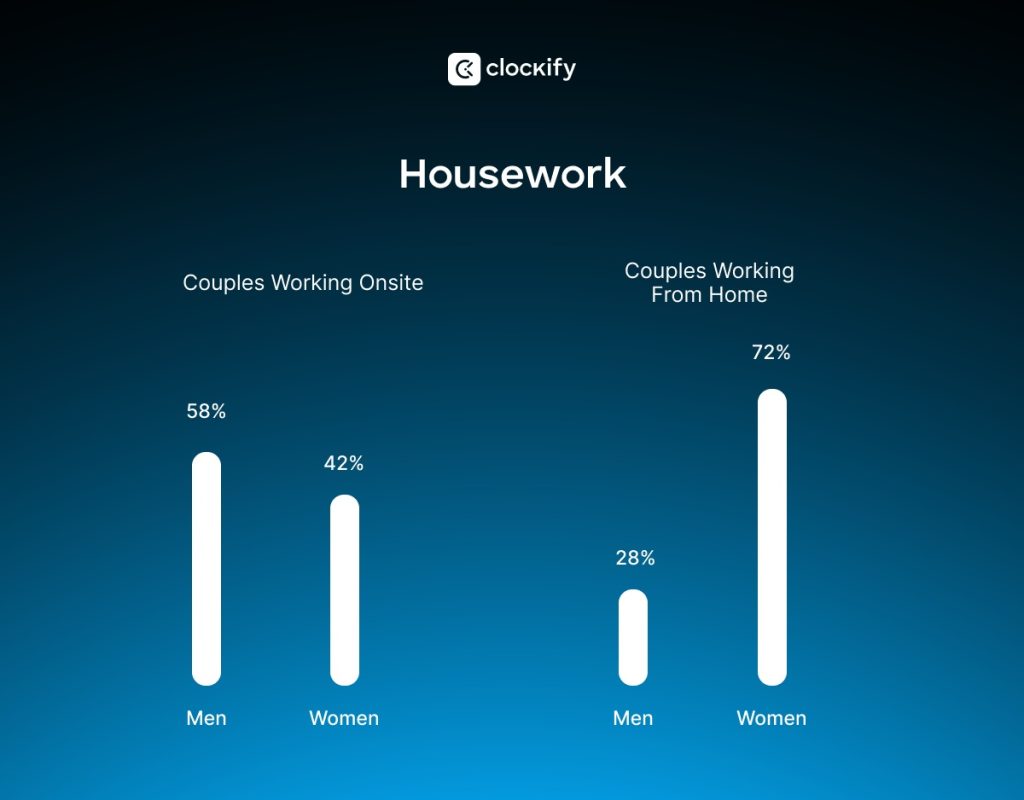Implementing a Task Allocation System for Efficient House Cleaning

Understanding the Importance of Organized Cleaning
In today’s fast-paced world, the demand for clean and organized living spaces cannot be overstated. With the multitude of responsibilities that adults juggle daily—whether it be work, family obligations, or social commitments—the house cleaning can often become a daunting chore. Stress levels may rise when cleaning tasks pile up, leaving individuals feeling overwhelmed and lost amid the chaos. This is where the implementation of a task allocation system can serve as a transformative solution.
A well-structured task allocation system plays a crucial role in ensuring that cleaning duties are divided fairly and effectively among household members. By distributing chores, conflict can be minimized, and accountability enhanced. This organized approach allows for everyone to contribute to the cleanliness of their environment. Among the various benefits of adopting a task allocation system are:
- Enhanced teamwork: When all members of a household pitch in, cleaning becomes a shared responsibility. This not only strengthens family bonds but also fosters a sense of community.
- Time management: Effective task allocation helps prioritize cleaning duties. By addressing the most critical areas first—like kitchens and bathrooms—families can ensure their living spaces are not just clean, but hygienic as well.
- Reduced overwhelm: Dividing larger cleaning projects into smaller, manageable tasks makes the overall workload feel less daunting. For instance, rather than scrubbing an entire house in one day, individuals can tackle one room at a time.
Methods to Implement a Task Allocation System
There are several effective methods for establishing a task allocation system that can cater to varying family dynamics and preferences:
- Chore charts: These visual aids are an effective way to outline and remind household members of their responsibilities. A colorful chart hung on the fridge can serve as an engaging reminder and source of motivation for children.
- Mobile apps: In our tech-savvy age, utilizing apps designed for task management can streamline the process of tracking and assigning chores. Many of these apps offer notifications and reminders, ensuring that tasks do not fall through the cracks.
- Rotating schedules: To prevent monotony in cleaning duties, households may implement a rotating schedule where chores are reassigned on a weekly or monthly basis. This ensures that everyone experiences different tasks while maintaining balance and variety.
By systematically implementing a task allocation system, families can create a living environment that is not only cleaner but also more enjoyable. Think of it as setting the stage for improved cooperation, where individuals take pride in their contributions. As households explore these systems, they may find that not only does their cleaning routine become more efficient, but the overall atmosphere at home transforms for the better. Delve deeper into the possibilities of chore management and unlock a clean, harmonious home.
DISCOVER MORE: Click here to learn how to set up a preventive maintenance schedule

Key Steps to Structuring an Effective Task Allocation System
Implementing a task allocation system is not merely about creating a list of chores; it’s about developing a comprehensive strategy that works for your specific household dynamics. To ensure the success of this system, consider the following key steps:
- Assess Household Needs: Before diving into task allocation, it’s essential to evaluate the unique requirements of your home. Take stock of the major cleaning tasks that need to be regularly addressed, including vacuuming, dusting, and mopping. Understanding the size and scope of these tasks will aid in determining how many chores need to be allocated and what types of roles might suit your family members best.
- Engage Everyone in the Process: A foundation of successful task allocation is ensuring that all household members feel involved in the decision-making process. Consider holding a family meeting to discuss chores, expectations, and preferences. This helps to build mutual accountability and allows everyone to voice their opinions regarding what activities they prefer or excel at.
- Establish Clear Responsibilities: In a well-rounded task allocation system, clarity is key. Assign specific chores that link to each member’s strengths and capacities. For example, if one family member finds joy in gardening while another enjoys organizing, assign those respective tasks accordingly. Clearly defining roles reduces confusion and ensures tasks are completed correctly.
- Set Realistic Goals: To maintain motivation and commitment to the system, it is essential to set feasible goals. Overloading family members with too many tasks can quickly lead to burnout. Start with a manageable number of responsibilities based on availability and gradually increase as needed, recognizing achievements along the way.
- Incorporate Flexibility: Life can be unpredictable, and so should be your task allocation system. Be open to readjustments based on changing schedules, priorities, and moods. Having a flexible approach helps sustain motivation and accommodates any unforeseen events that may derail the cleaning routine.
As families explore these foundational steps, they can tailor a task allocation system that reflects their individual needs and fosters an enjoyable cleaning experience. Implementing these strategies not only facilitates efficient house cleaning but also nurtures a culture of cooperation.
Tailoring the System to Family Preferences
Every household is unique, and successful implementation requires an understanding of family preferences. Consider factors such as age, abilities, and personal interests when designing a cleaning approach. For instance, younger family members may not yet be equipped to handle heavy lifting or intricate tasks, making it appropriate to assign simpler chores such as tidying up or sorting laundry. By customizing tasks to fit each member’s strengths and schedules, your cleaning routine can become a more harmonious part of daily life
Informed by these insights and strategic planning, families will likely uncover a new and satisfying rhythm in their household management, leading to cleaner living spaces and potentially enriched relationships among members.
| Category | Advantages |
|---|---|
| Time Efficiency | Implementing a task allocation system ensures that cleaning tasks are divided based on priority and time sensitivity, often leading to substantial reductions in the overall time spent on house cleaning. |
| Improved Accountability | With designated tasks for each member of the household, accountability increases, making it less likely that tasks will be overlooked or neglected, therefore ensuring a cleaner home environment. |
| Resource Optimization | Utilizing a task allocation system can optimize available resources, such as cleaning supplies and tools, by ensuring that they are used where they are most needed, reducing waste and saving money. |
The implementation of a task allocation system not only enhances productivity but also fosters a sense of collaboration and shared responsibility among household members. Such systems can be as simple as digital checklists or as advanced as comprehensive cleaning management software. By defining roles clearly, it mitigates conflicts and misunderstandings about cleaning responsibilities, creating a more organized and harmonious living space. Furthermore, regular assessments of the task allocation can lead to continual improvements, ensuring the system adapts to changing schedules and preferences of family members. The benefits of implementing this tactical approach can lead to a significant transformation in household cleaning dynamics, contributing to a more serene and inviting home atmosphere. Exploring various tools and methods to establish an effective task allocation system can propel families towards achieving an efficient and sustainable cleaning routine.
DISCOVER MORE: Click here to learn about the impact of eco-friendly cleaning products
Utilizing Technology to Enhance Task Allocation
In today’s digital age, implementing a task allocation system for house cleaning can greatly benefit from leveraging technology. There are various tools and applications designed specifically to streamline household responsibilities. By adopting these technologies, families can ensure that everyone stays organized, accountable, and motivated.
- Task Management Apps: Consider using mobile applications like Todoist, Trello, or Asana to manage cleaning tasks. These platforms allow users to create to-do lists, set deadlines, and assign specific chores to each family member. The visual elements of these apps can enhance engagement, allowing everyone to track their progress and celebrate achievements as a team.
- Shared Calendars: Utilizing shared calendars, such as Google Calendar, can help families coordinate cleaning schedules effectively. By blocking out time for specific chores, household members can plan their activities accordingly, ensuring that responsibilities are met without conflicting schedules. Alerts and reminders can also be set to prompt individuals when it’s time to tackle their assigned tasks.
- Automated Reminders: Many smartphones come equipped with built-in reminders and task lists. Take advantage of these features to establish routine cleaning reminders. Automated nudges can help prompt family members to stay on top of their responsibilities, eliminating excuses for forgotten chores.
- Smart Home Technology: The incorporation of smart home devices can transform cleaning efficiency. Robotic vacuums, for example, allow families to schedule cleaning sessions without the need for manual intervention. Integrating these devices into your task allocation system not only makes cleaning easier but can also reduce the burden placed on family members.
- Online Chat Groups: Creating a family group chat on platforms like WhatsApp or Messenger can foster communication regarding cleaning tasks. This informal setting allows members to ask questions, share tips, or notify others when a task is completed. Keeping conversations open can strengthen the teamwork aspect of house cleaning.
Integrating technology into your task allocation system not only simplifies communication but also promotes a sense of shared responsibility that is vital to maintaining cleanliness in the home. These digital tools can help streamline cleaning efforts while allowing families to adapt their systems as needed, ensuring that everyone plays a part in preserving a tidy living space.
Recognizing Contributions and Creating Incentives
A pivotal aspect of a successful task allocation system is recognizing and rewarding the efforts of family members. Acknowledgment not only boosts morale but also enhances engagement within the household. By implementing a system of incentives, families can turn mundane chores into stimulating activities.
- Creating a Reward System: Consider implementing a point-based reward system where family members earn points for completing tasks. These points can then be redeemed for privileges such as screen time, later bedtimes, or a family outing. Such incentives make cleaning feel less like a chore and more like an opportunity for fun.
- Celebration Trackers: Establish a visual chart or board that tracks each family member’s contributions. Celebrate milestones, such as completing a month’s worth of chore responsibilities or achieving a certain number of points. This not only builds excitement but also reinforces the value of teamwork.
- Scheduling Family Cleaning Days: Occasionally, designate a family cleaning day where everyone pitches in to tackle larger tasks together. Make it enjoyable by playing music or providing snacks. This group effort can strengthen relationships while efficiently knocking out a significant amount of work in a short time.
By weaving in elements of recognition and incentives into the task allocation system, families can cultivate a positive cleaning culture that encourages participation, solidarity, and ultimately, enhances the overall cleanliness of the home.
DISCOVER MORE: Click here to learn about maintenance and flooring durability</
Conclusion: Achieving Harmony Through Structured Cleaning
Implementing a task allocation system for efficient house cleaning is not just about divvying up chores; it’s about fostering a collaborative environment that encourages participation, accountability, and shared responsibility among family members. As we’ve explored, leveraging technology and establishing a system of recognition and rewards can transform house cleaning from a dreaded duty into an engaging and satisfying collective endeavor.
By utilizing tools such as task management apps, shared calendars, and automated reminders, families can maintain a clearer overview of their cleaning schedules and responsibilities. This structured approach mitigates confusion and enhances communication, ultimately leading to a more organized household. Furthermore, integrating smart home technologies can simplify tasks and give families more time to enjoy each other’s company rather than stressing over household upkeep.
Moreover, implementing recognition systems and incentives not only nurtures motivation but also cements a culture of appreciation within the home. Celebrating victories—no matter how small—creates a supportive atmosphere that bolsters cooperation and makes cleaning a shared goal rather than an individual burden.
In conclusion, an efficient task allocation system for house cleaning promotes a balanced lifestyle, where cleanliness becomes synonymous with harmony and teamwork. Embracing this systematic approach invites families to prioritize their living spaces while cultivating relationships, transforming the mundane into memorable moments. As you consider implementing such a system, remember that the journey toward a cleaner home is also a journey toward a more connected family.


